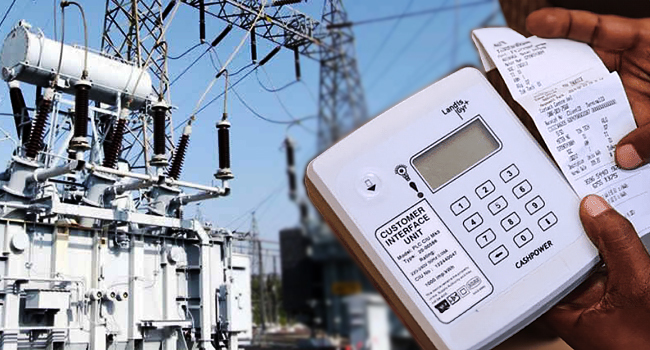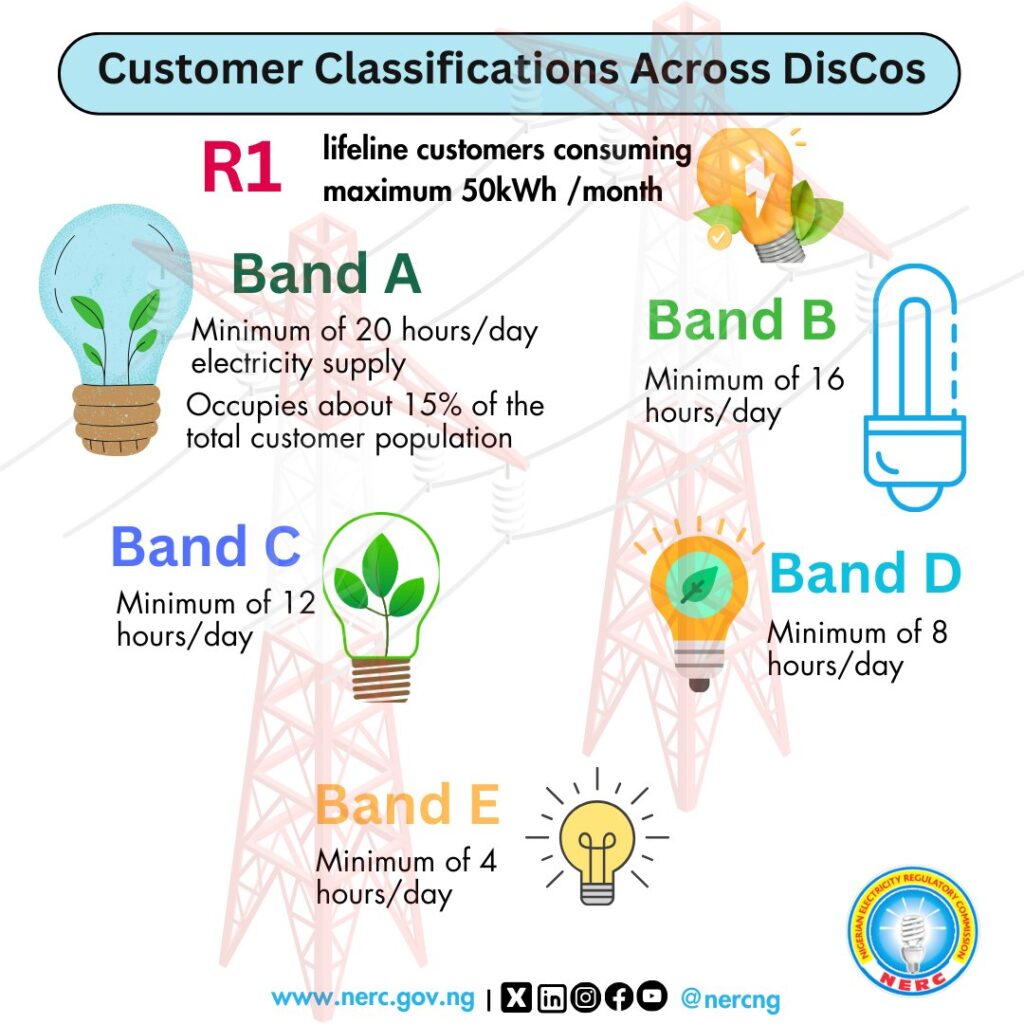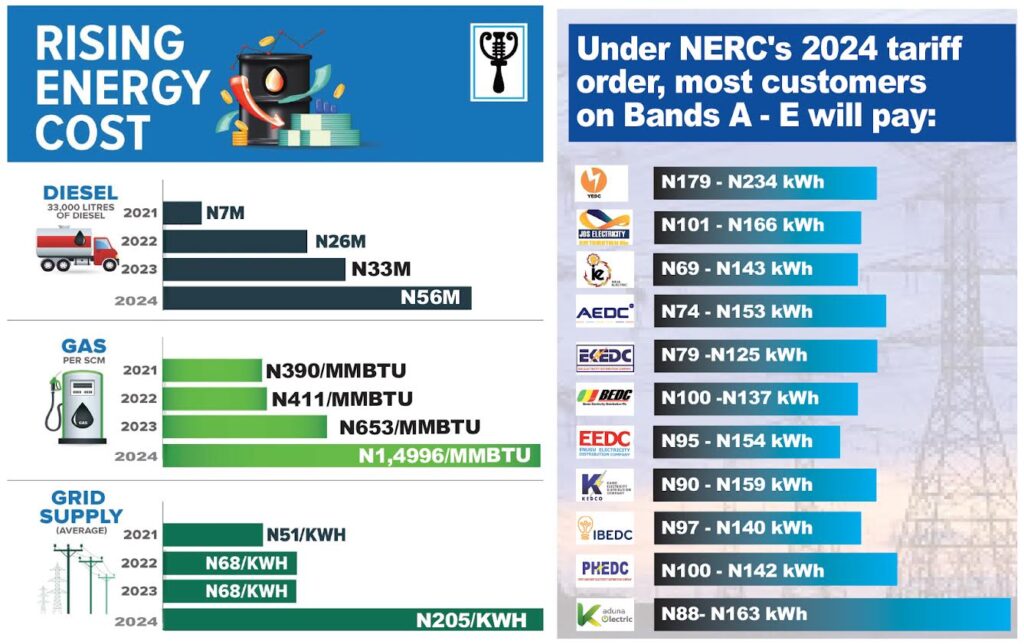APGA National Chairman chides the Government on the impact of the electricity hike on the Nigerian populace at this trying time, advices on the mitigation of the negative impact – Written by Nduka Anyanwu, SA, Media to the National Chairman APGA, Barrister Sly Ezeokenwa
Recall that President Bola Tinubu had, since July 1, 2023, froze electricity tariff at December 2022 level with a promise to pay the difference as subsidies. But the government has so far failed to pay any amount to the market, leading to the accumulation of N3.5 trillion debts to power generation companies and gas suppliers.
The Vice Chairman, NERC, Mr. Musliu Oseni, told journalists in Abuja that in order to ensure that only customers who receive at least 20 hours of electricity daily are on Band A, the number of feeders that
meet the threshold has been reduced from 875 to less than 500. He explained that only 15 percent of the 13,162,572 electricity customers nationwide would be affected by the tariff increase while the remaining customers would continue to pay the old rate until supply improved and they are migrated to the new Band A.

NERC expressed the hope that the additional revenue would attract investments into the sector, adding that it would deploy several tools to ensure that customers in Band A would get the daily hours of supply
from electricity distribution companies, DisCos.
The effect of a hike in electricity tariffs in Nigeria during challenging times can have several implications on the population, as opined by the APGA National Chairman, These are some of the potential effects not withstanding:
Increased Cost of Living: Higher electricity tariffs can lead to an increase in the cost of living for individuals and businesses. This can particularly impact low-income households who may struggle to
afford the additional expenses. It can also affect businesses, leading to higher production costs, which may be passed on to consumers through increased prices for goods and services.

Financial Burden on Households: Higher electricity tariffs can place a significant financial burden on households, especially those already grappling with economic challenges. It can strain household budgets, forcing individuals to make difficult choices between electricity usage, essential needs, and discretionary spending. This can impact the overall quality of life for individuals and families.
Productivity Challenges for Businesses: Businesses heavily reliant on electricity, such as manufacturing industries, small-scale enterprises, and service providers, may face increased operational costs. Higher electricity tariffs can reduce profit margins and hinder business growth. It can also affect productivity if businesses are unable to afford consistent and reliable power supply, leading to disruptions and inefficiencies.
Impact on Socioeconomic Development: Access to affordable and reliable electricity is crucial for socioeconomic development. A hike in electricity tariffs can impede progress in various sectors,
including education, healthcare, infrastructure, and technology. It can hinder investments, limit job creation, and slow down economic growth, impacting the overall development of the country.
Social Implications: In communities where reliable electricity supply is scarce, a hike in tariffs can deepen existing inequalities. It can exacerbate the divide between those who can afford reliable electricity and those who cannot. It may also lead to social unrest or protests if citizens perceive the tariff increase as unjust or burdensome.
It’s important to note that the specific impacts of a hike in electricity tariffs will depend on various factors such as the magnitude of the increase, the availability of alternative energy sources, the efficiency of the electricity distribution system, and the government’s efforts to mitigate the impact through social welfare programs or subsidies.

Addressing the challenges associated with electricity tariffs requires a comprehensive approach that balances the need for revenue generation with considerations for affordability, social welfare, and sustainable economic development. It may involve measures such as improving power infrastructure, diversifying the energy mix, promoting energy efficiency, and implementing transparent and fair tariff structures.
For emphasis, the APGA Leadership as well proposed the how to mitigate the negative effects of
a hike in electricity tariffs, several strategies and solutions to be considered which include the following:
1. Targeted Subsidies and Social Welfare Programs: Governments can implement targeted subsidies or social welfare programs to provide financial assistance to vulnerable populations, such as low-income households. These programs can help cushion the impact of higher electricity tariffs and ensure that basic electricity needs are met for those who may struggle to afford the increased costs.
2. Energy Efficiency and Conservation Initiatives: Promoting energy efficiency and conservation measures can help reduce electricity consumption and lower bills for consumers. Governments can educate the public about energy-saving practices, encourage the use of energy-efficient appliances, and provide incentives for businesses to adopt energy-efficient technologies. This approach can help offset the impact of tariff hikes by reducing overall electricity demand.
3. Renewable Energy Development: Investing in renewable energy sources can help diversify the energy mix and reduce reliance on expensive fossil fuel-based electricity generation. Governments can provide incentives and create enabling environments for the development of renewable energy projects, such as solar, wind, and hydropower. This can contribute to lowering electricity costs in the long run and provide more affordable and sustainable energy options.
4. Improved Electricity Infrastructure and Distribution: Enhancing the efficiency and reliability of electricity infrastructure and distribution systems can help optimize electricity supply and reduce losses. Governments can invest in upgrading transmission and distribution networks, implementing smart grid technologies, and improving maintenance and monitoring processes. This can result in more stable electricity supply and potentially mitigate the need for frequent tariff increases.
5. Transparent and Fair Tariff Structures: Ensuring that tariff structures are transparent, fair, and based on accurate cost calculations is essential. Governments can establish independent regulatory bodies to oversee tariff setting processes and ensure that tariffs reflect actual costs while considering affordability for consumers. Transparent processes and public consultation can help build trust and understanding among consumers regarding the necessity of tariff adjustments.
6. Public-Private Partnerships: Engaging the private sector in electricity generation, distribution, and service provision can bring in expertise, investment, and efficiency. Public-Private Partnerships (PPPs) can help optimize operations, attract capital for infrastructure development, and improve service delivery. PPPs can also encourage innovation and competition, potentially leading to cost reductions and improved access to affordable electricity.
7. Enhanced Consumer Education and Engagement: Governments can invest in consumer education and engagement initiatives to enhance awareness of electricity usage, billing structures, and available support mechanisms. Providing clear information and guidance to consumers can empower them to make informed decisions regarding their electricity consumption and manage their bills effectively.
It’s important as well to note that the suitability and effectiveness of these strategies may vary
depending on the specific context and challenges faced by the country at large. A comprehensive approach that combines multiple strategies and considers the unique circumstances of the population can help mitigate the negative effects of electricity tariff hikes and ensure a more sustainable and affordable electricity supply for all.
Written for and on-behalf of Barrister Sly Ezeokenwa,
APGA National Chairman


